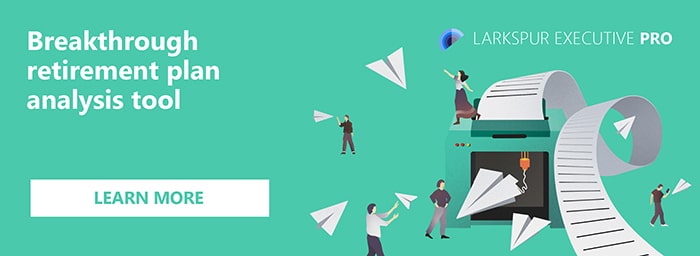
- MEPs date back to the 20th Century
- What are the advantages of a Multiple Employee Plan?
- How the SECURE Act Affects MEPs
- The Difference Between a Multiple Employer Plan vs. a Multiemployer Plan
- Use LE’s Powerful Capabilities to help Small businesses
According to investopedia, an MEP or Multiple employee plan is a retirement savings plan adopted by two or more employers that are unrelated for income tax purposes, as defined by the Internal Revenue Service (IRS) and the U.S. Department of Labour (DOL). The MEP can be a defined-benefit pension plan or a defined-contribution retirement plan such as a 401(k).
Each MEP is organized and run by an entity known as the MEP sponsor. The MEP sponsor is responsible for administrative duties and, in most cases, has fiduciary liability for the plan. Companies that join the MEP are known as “adopting employers.”
MEPs date back to the 20th Century
The concept of multiple employer plans dates to the early 20th century and was formalized by the Labor Relations Act of 1947, better known as the Taft-Hartley Act. At that time, it was largely aimed at permitting management and labor unions to come to agreements that applied across several employers in the same industry.
Today’s multiple employer plans also allow small companies to band together to offer a retirement savings plan. Individually, a small company may not be equipped to handle the administrative costs, complexity, liability, and sheer paperwork involved in many plans.
What are the advantages of a Multiple Employee Plan ?
MEPs can be as beneficial to a plan sponsor as it is for the participants. Participating in an MEP can lower costs associated with forming and managing a broad retirement plan that follows the Employee Retirement Income Security Act of 1974 (ERISA). Employers can use multiple employer plans to work together and combine their resources, which can save these employers money.
Apart from making retirement plans accessible to small businesses because of their low operating cost. MEPs because of their small scale ensure that small businesses are protected from law suits.
Employees in unionized industries reap the benefits of multiemployer plans. Their benefits are more secure because multiple employers take on the risk associated with the plan. Multiemployer plans make it easy for these employees to change employers within the same industry while still having the same benefits within the plan.
These employees benefit from not having to wait for their new benefits to begin. Instead, their existing benefits simply transfer to their new jobs, and they don’t experience a gap in their coverage. Employers that have a union workforce also benefit because they aren’t solely taking on all the risk.
Both multiple employer plans and multiemployer plans come with many advantages for businesses and employees alike, and Human Interest can help you determine which is right for your team. Knowing the differences between the two can help you make an informed decision about the type of plan you want to offer.
How the SECURE Act Affects MEPs
With the introduction of the SECURE Act, MEPs benefited from a variety of changes to make them more attractive to smaller businesses.
Some of the largest changes include:
- Making it easier to establish an MEP
- Providing protection against the “One Bad Apple” rule
- Establishing a new form of MEP – the PEP, or “pooled employer plan”
The announcement of a new rule from the Department of Labor to make it easier for small businesses to offer retirement plans through Association Retirement Plans (ARP) makes research from Empower Retirement especially timely.
A Colorado-based mega-recordkeeper found that 66% of small business owners who do not offer a retirement plan today are likely to consider an open multiple employer plan (MEP).
The Difference Between a Multiple Employer Plan vs. a Multiemployer Plan
According to a recent article by the Human Interest, Although multiple employer plans and multiemployer plans sound quite similar, there are some key differences between these two kinds of plans that concern multiple employers. First of all, a multiple employer plan is a pension plan that multiple employers manage. The reason more than one employer maintains this plan is that through a joint effort, they can lower administrative expenses and pool their plan’s assets. This type of plan is also beneficial for investing purposes.
A multiemployer plan is a plan that uses collective bargaining. Similar to a Multiple Employer Plan, multiple employers manage it. These employers tend to work in similar industries and labor unions. Some groups refer to multiemployer plans as “Taft-Hartley” plans. They must adhere to the qualification rules under IRC §414(f).
Employees who work in unionized fields can benefit from multiemployer plans. If they want to work for a different employer within their industry, they may be able to continue the retirement plan they had with their previous employer. Employees who work for construction, trucking, or chain grocery store companies tend to benefit from multiemployer plans.
Use LE’s Powerful Capabilities to help Small businesses
For the un initiated, Larkspur – With its vast and ever-growing database of plans and verified contacts and state of the art automated email marketing campaigns is a very powerful prospecting tool. For advisors who are offering MEPs to their clients, it gives you the capability to specifically target small plans and the opportunity to explain business owners through automated drip campaigns, the advantages of converting to a Multiple Employee Plan.



